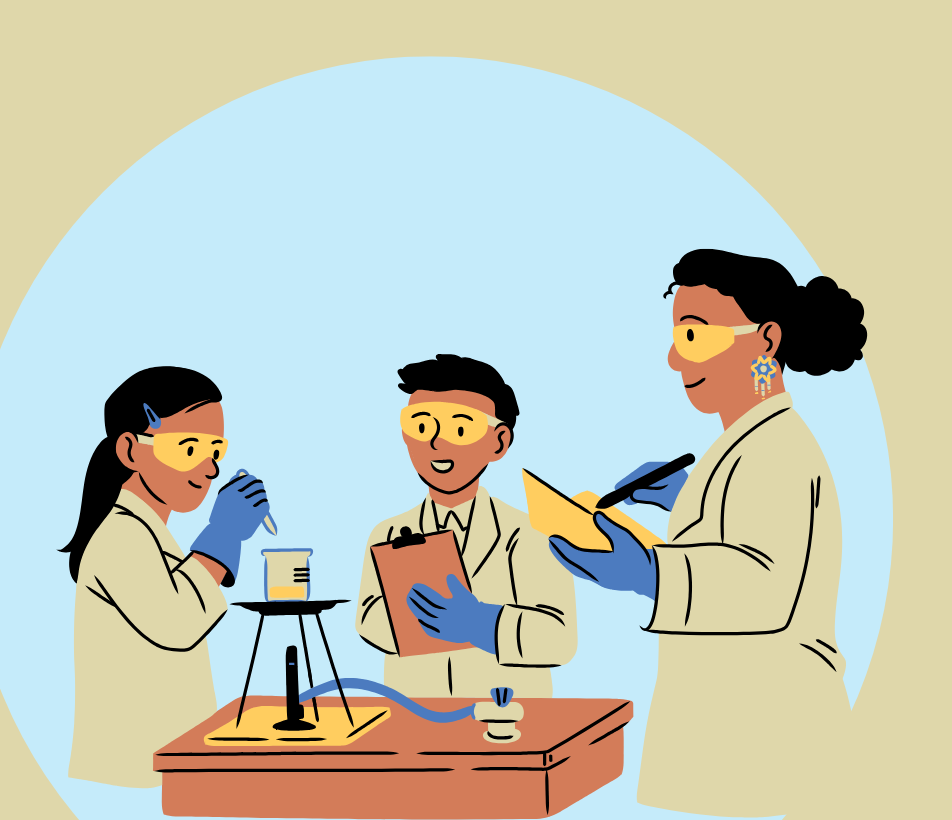The Real Cost of Poor Onboarding in Academic Labs
Why poor research training is hurting science—and how we can fix it
When I first joined a research lab as a student, I spent my first week waiting.
Waiting for someone to show me how to use the equipment. Waiting for safety clearance. I shadowed another student who was clearly overworked, I flipped through binders of outdated protocols, and quietly hoped I wasn’t messing anything up.
I thought it was just me. Was I supposed to know more?
Years later—after teaching dozens of students, managing grants, and running a research team—I realized: this is the system. I see first hand how wasteful it can be.
Academic labs are some of the most intellectually intense environments. Undergraduate students competing to get in, graduate students working their bu**s off towards their dissertation and post-docs trying to score another grant!
Yet, most labs treat onboarding as an afterthought: a couple of walkthroughs, a scavenger hunt for old lab notebooks and documents in three different formats, and a verbal “Let me know if you have questions.” An informal knowledge transfer, instead of structured teaching/training!
We’re burning time, trust, and talent.
And we barely notice it. Because its academia, and because teaching is a noble cause enough, it couldn’t be better, right?
What Does Poor Onboarding Actually Cost?
Let’s break it down.
Wasted PI and Postdoc Time
Every time a new student joins, someone has to explain the same things:
How to log samples
Where the antibodies are
How to book equipment
Who to ask about what
Without a system, senior lab members repeat themselves endlessly. It adds up to dozens of hours per semester—time that could go into writing grants or doing actual science.
Repetition isn’t mentorship. It’s inefficiency in disguise.
Increased Errors and Safety Risks
When protocols aren’t clearly documented or consistently taught:
Samples are mislabeled
Cell cultures get contaminated
Research subjects get affected
Instruments are misused
Safety compliance falls through the cracks
Someone gets hurt!
Even small mistakes can delay projects by weeks, jeopardize grant deliverables and waste resources. And the larger the lab, the faster this risk compounds.
Low Morale and High Turnover
New students often feel lost and anxious. They don’t want to ask “dumb questions,” so they work in silence—guessing their way through tasks. Some disengage quietly. Others burn out. Some continue on the wrong path…
Meanwhile, senior lab members grow resentful of always being “the one who knows everything.” The culture becomes one of gatekeeping instead of growth.
A lack of onboarding is a lack of orientation—to tasks, tools, and team culture.
Delays in Research Progress
If it takes 6-8 weeks (or more) to get a student up to speed, and your lab has a rotating cast of undergrads, interns, or new grads every semester, that’s months of lag built into your system each year.
Multiply that across a department, and we’re looking at a massive invisible drag on research productivity. No wonder everyone is growing increasingly cynical about those taxpayer $$ towards research!
Why This Happens
It’s not because PIs or lab managers don’t care. It’s because:
There’s no time to build structured systems from scratch
Labs are inherently transient—always in flux
Training lives in people’s heads instead of in shared systems
Most onboarding materials are inherited, outdated, or fragmented or in a decade old lab notebook!
And because everyone is doing it this way, we assume it’s normal.
The Onboarding Loop: A Broken Cycle
New student joins
Postdoc or lab manager or whoever is available at the time explains everything manually
Knowledge gaps accumulate
Student leaves (or becomes the next trainer)
Cycle repeats, ugh!
We’ve normalized this loop—but we don’t have to.
A better way is surely possible, its time to design it!
⸻
What does onboarding look like in your lab?
• Is it consistent?
• Is it documented?
• Is it working?
I’d love to hear your stories—good, bad, or funny. Leave a comment or DM me if you dont want your PI to see this ;)
Because if we want to improve science, we need to change how we train scientists.
⸻
Next week- Why Lab Training Falls Apart—and How to Fix It (or atleast how I am trying to fix it)
Thanks for reading,
Geetanjali


